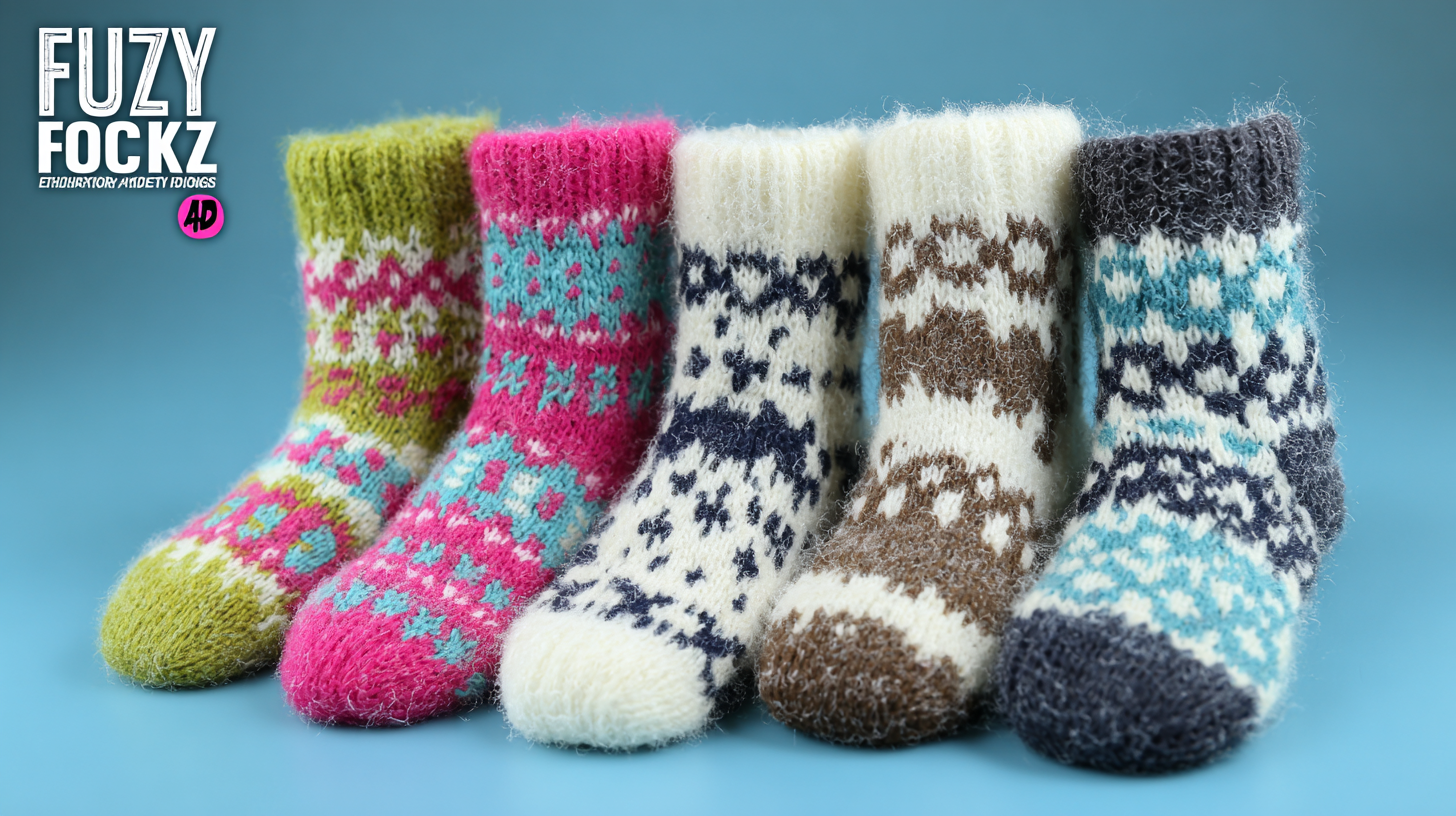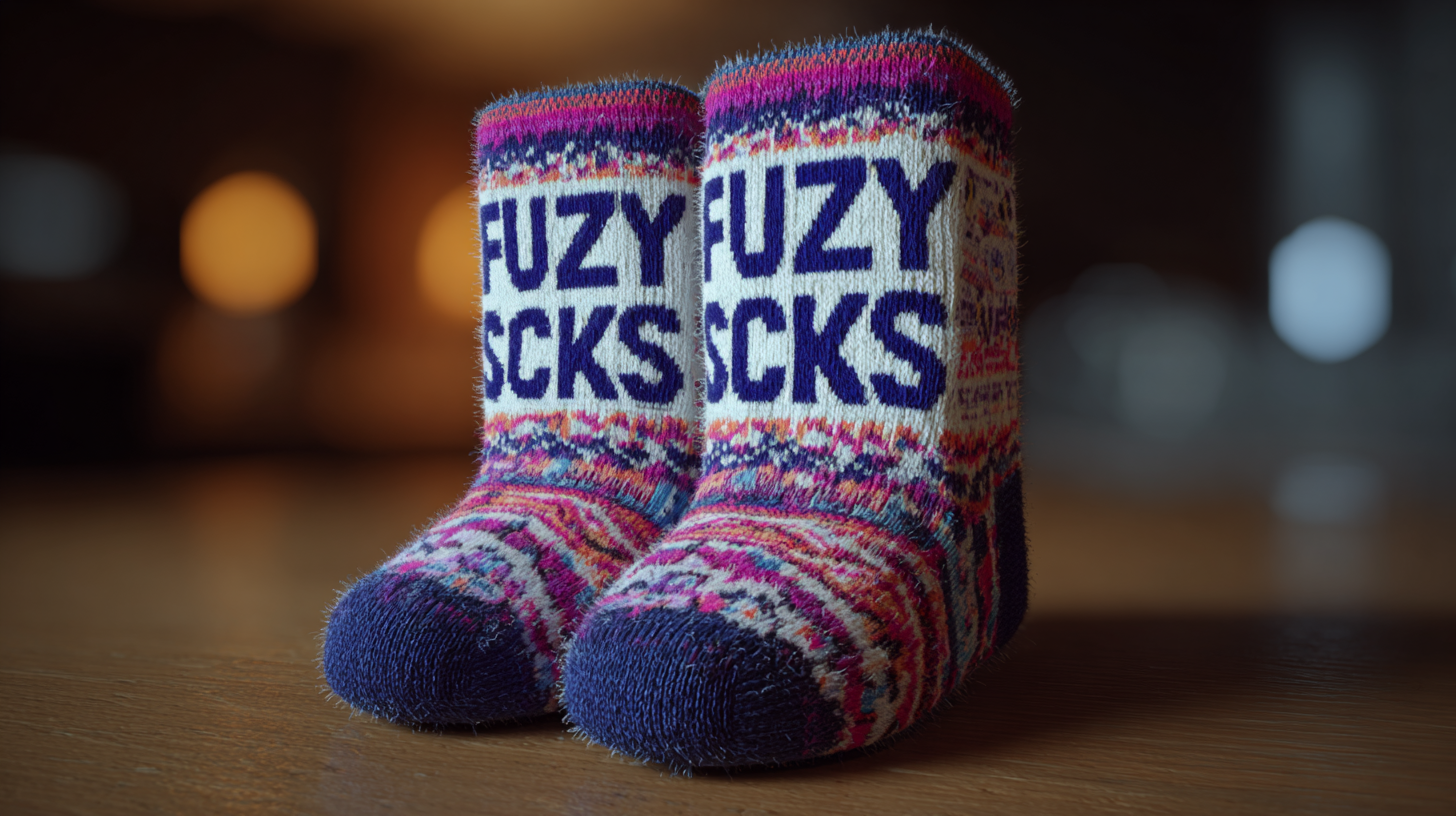
Leave Your Message
-
lwl2103
-

In recent years, the global market for cozy apparel has witnessed significant growth, with fuzzy socks with grips emerging as particularly popular items. According to industry reports, the demand for fuzzy socks with grips is projected to increase by 15% annually, driven by consumer preferences for both comfort and safety. As households become more focused on adding layers of warmth during colder months, these socks offer not just a soft feel but also anti-slip features that enhance safety on various surfaces. Major manufacturing hubs are stepping up to meet this demand, and understanding the best exporting factories worldwide can provide valuable insights into quality and innovation in this segment. For businesses aiming to thrive in this vibrant market landscape, it’s essential to stay abreast of emerging trends and technology developments that could shape the future of fuzzy socks with grips by 2025.

The global market has experienced a notable surge in demand for fuzzy socks with grips, a trend driven by a growing emphasis on comfort and safety in everyday wear. As consumers increasingly prioritize cozy and practical footwear, these socks have become a staple not only for lounging at home but also for activities such as yoga, pilates, and even light indoor exercise. The soft texture combined with the grip feature ensures that wearers can move freely without the fear of slipping, making them an ideal choice for various lifestyles.
Manufacturers around the world have recognized this rising trend and are adapting their production strategies to meet consumer needs. Factories specializing in fuzzy socks with grips are now enhancing their product lines and focusing on innovative designs to cater to different demographics, from children to seniors. As more people prioritize comfort alongside utility in their fashion choices, the demand for high-quality, stylish fuzzy socks with grips is expected to continue its upward trajectory, further solidifying their position in the global footwear market.
This bar chart illustrates the rising demand for fuzzy socks with grips in different global markets, highlighting a significant consumer interest particularly in Asia and Europe in 2023.
China has established itself as a powerhouse in the manufacturing of fuzzy socks, dominating the global market with its production capabilities. With a robust textile industry and advanced manufacturing technologies, Chinese factories are able to provide high-quality fuzzy socks equipped with grips that enhance both comfort and safety for consumers. This demand for functional yet stylish footwear has contributed to the rapid growth of this segment within the textile market.
Recent statistics highlight that the global cashmere clothing market is on an upward trajectory, projected to escalate from $3.63 billion in 2025 to $4.86 billion by 2032, boasting a compound annual growth rate (CAGR) of 4.29%. This growth reflects a broader trend in the textile industry, where quality and functionality are becoming paramount. As fuzzy socks continue to gain popularity for their cozy feel and unique designs, Chinese manufacturers are well-positioned to meet the rising demand, further cementing their status as the leading exporters in this niche market.
The market for fuzzy socks with grips has evolved significantly over the years, reflecting changing consumer preferences and lifestyle trends. Initially popular for their warmth and comfort, these cozy accessories have transformed into practical household items, emphasizing safety and functionality. The growth in remote working and casual living environments has propelled fuzzy socks with grips into the spotlight, as people seek to maintain comfort without sacrificing stability while walking indoors.
In recent years, consumers have become increasingly conscious of the materials and manufacturing processes behind their products. Eco-friendly options made from sustainable fibers have gained traction, responding to the rising demand for environmentally responsible fashion. Additionally, innovative designs that blend style with comfort and functionality—such as various colors, patterns, and enhanced grip features—have emerged. These shifts not only cater to aesthetic preferences but also highlight a modern appreciation for practicality in homewear, making fuzzy socks with grips an essential item in wardrobes worldwide.
Sustainability has become a pivotal focus in the textile industry, especially in sock manufacturing. As consumers increasingly demand eco-friendly products, factories are responding by incorporating sustainable materials. Data from the Global Alliance for Sustainable Fashion suggests that the textile industry is responsible for about 10% of global carbon emissions, highlighting the need for greener alternatives. Notably, bamboo and organic cotton have emerged as popular choices for sock production due to their lower environmental impact and biodegradability.

When considering eco-friendly materials, it’s essential to look for certifications that ensure sustainability. For instance, organic cotton is typically grown without harmful pesticides, benefiting both the environment and farmers. Additionally, recycled polyester, made from post-consumer plastic bottles, can significantly reduce waste and energy consumption compared to virgin materials.
Tips for choosing sustainable fuzzy socks with grips include searching for brands that explicitly state their use of sustainable materials and practices. Consumers should also look for care instructions that promote longevity; washing at lower temperatures can extend the life of socks, thereby reducing overall environmental impact. Opt for products that prioritize eco-conscious packaging as well, as it further supports the sustainability movement in the fashion industry.
The fuzzy sock industry has experienced a remarkable rise in demand, driven by the growing consumer preference for comfort and warmth in loungewear. As a result, key players in this sector are re-evaluating their import and export strategies to better meet market needs. Factories specializing in fuzzy socks with grips are at the forefront of this trend, often using innovative materials and designs to attract a global audience. These manufacturers have established themselves as essential partners for retailers looking to stock high-quality, fashionable, and functional fuzzy socks.

Countries such as China, the United States, and Turkey are leading the way in the export of fuzzy socks, with factories leveraging advanced technology and efficient supply chains. As sustainability becomes increasingly important, many companies are also focusing on eco-friendly materials and manufacturing processes. This shift not only appeals to environmentally conscious consumers but also positions these exporters as industry leaders committed to responsible practices. By staying attuned to market trends and consumer preferences, these factories are setting the stage for continued growth in the fuzzy sock export market.
